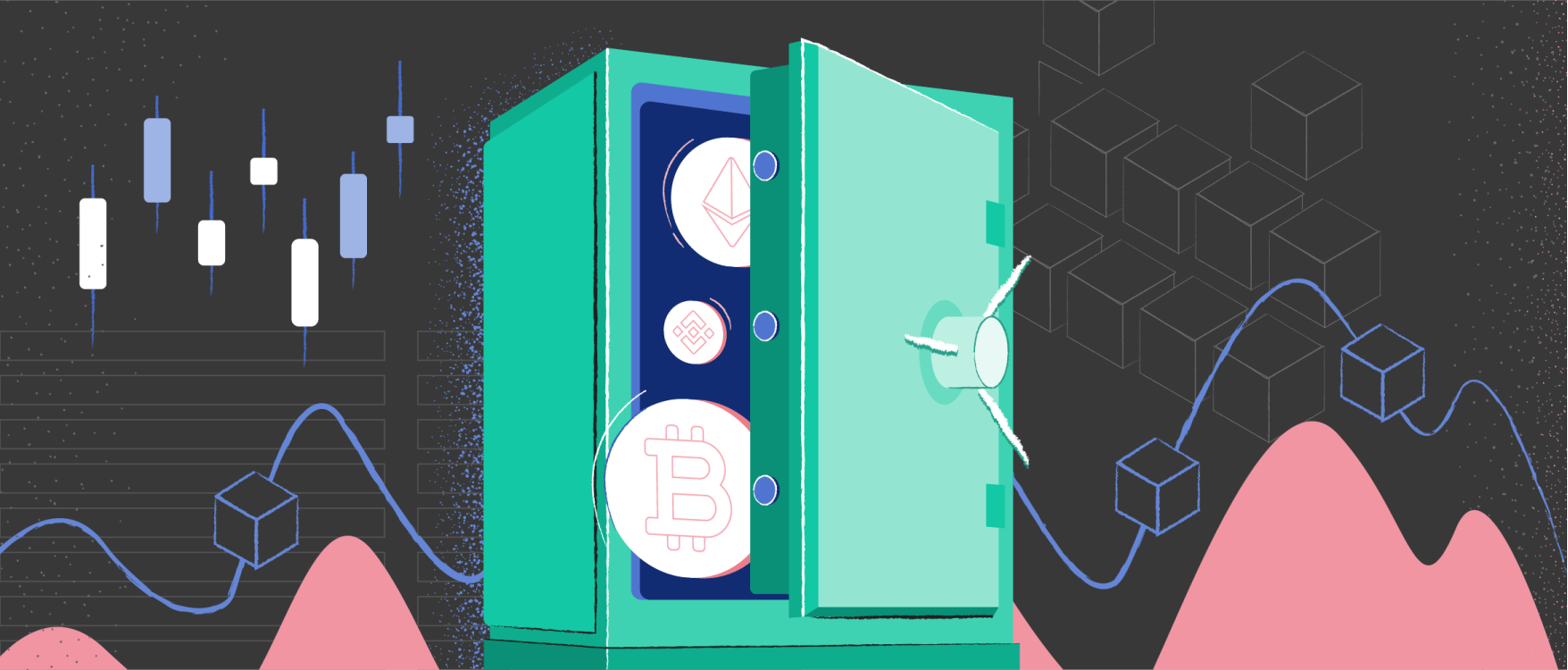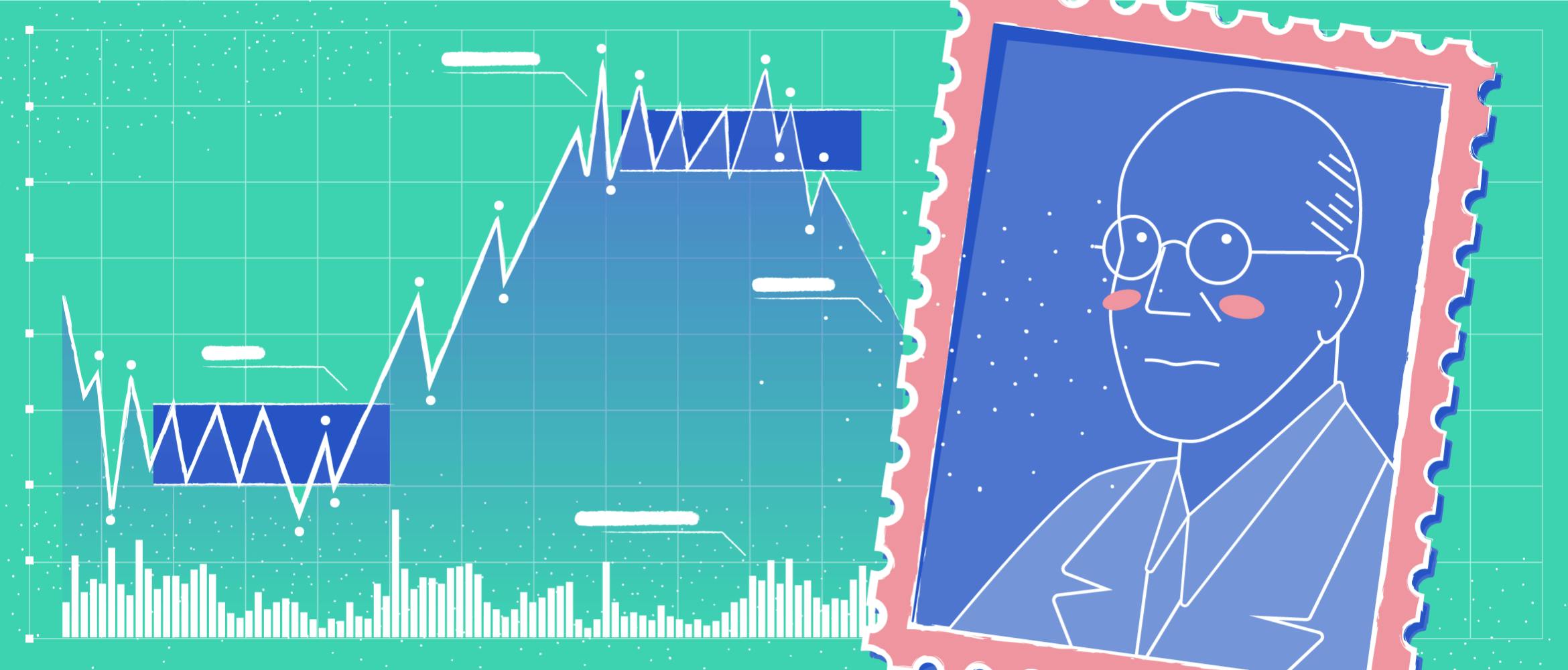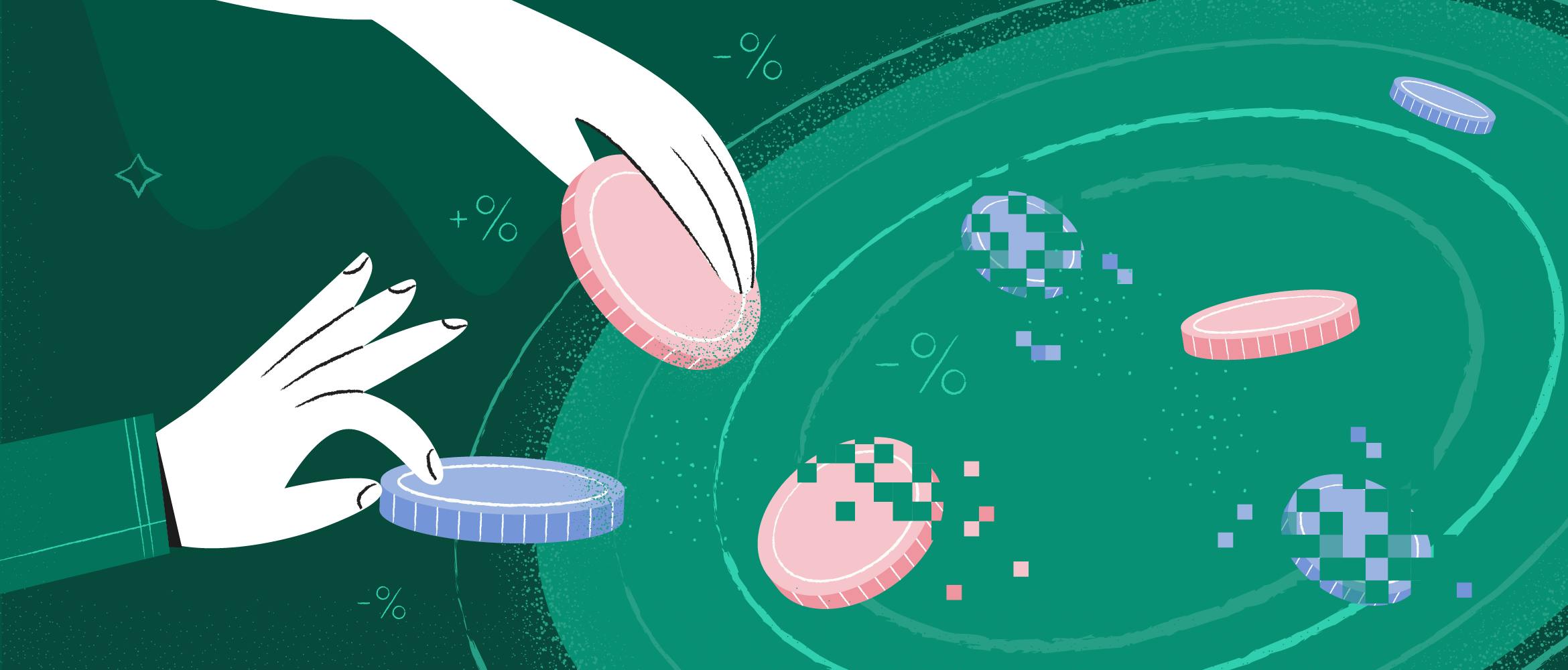
- All
- Tools
- Analytics
- Technical Analysis
- Trading
- Blockchain
- DeFi
- Guides
- Company News
- Educational
- Opinion
- Price Predictions
- Market News
- News
- Trading cases
- Practical guides
- Exchanges
- Trading signals
- Cryptocurrency
- Crypto bots
- Other
Become a crypto master
Learn everything about crypto,
trading and bots

The Wyckoff Method Explained for 2025
Start Trading on 3Commas Today
Get full access to all 3Commas trading tools with free trial period

Richard Wyckoff is a focal member in the history of technical trading analysis. He discovered the potential and subtleties of the stock market at the age of 15. The strategy described in this article didn’t take long to become a popular tool among Wall Street traders.
However, before delving into the specifics, such as what is Wyckoff distribution, accumulation phases, and what events they comprise, it's critical to get the overall notion behind the well-known approach.
What is Wyckoff Method?
The price movement exists within two market cycles: in consolidation (in flat, in balance) and in trend (in imbalance). In a consolidation, the volume is formed for a certain period of time. After the volume is traded, when the imbalance between the supply and demand occurs, the market goes either down or up.
Regardless of the time frame selected, the principle of price movement remains the same - it moves from balance to balance, from one level of volume trading to another. You can see Wyckoff's theory schematic representation below.
According to the Wyckoff graph, there are several phases of price movement on the market:
- Flat — sideways movement - asset accumulation zone (accumulation)
- The phase in which demand exceeds supply — this is an upward trend
- Flat — sideways movement - asset distribution zone (distribution)
- The phase in which supply exceeds demand — it’s a downward trend.
Richard used the values and order volume to determine the pattern of fluctuations, which he divided into two groups — accumulation (some traders also include reaccumulation) and distribution.
Wyckoff trading method principles in 2024
Studying Weikoff's trading philosophy, one can highlight the following key principles:
- Accumulation and distribution. There are no different factors to consider when analyzing charts. Everything you need is already reflected in the value and volumes of the asset, even Wyckoff shakeout events can be analyzed properly
- Wyckoff's method is universal; you can apply it while working on different timeframes. It’s suitable for all markets — from futures and options to currencies and crypto
- Demand and supply affect the price; they are behind all of its changes.
- Market prices depend on traders' decisions, so trading cannot be called an exact science.
- Experts should give preference to technical analysis.
- Indicators based on mathematical analysis are inferior to volumes, but you can use VSA signals instead.
- The price of the asset will grow as long as some want to buy it. If there are those willing to sell the asset, the price goes down.
Working in the “heart” of the trading system from his teenage years, Wyckoff relied on the big and active traders to impact the trends and directions of the prices. The Wyckoff indicator range included only volume and stock prices, which was one of the reasons for the popularity of the method as these indicators were mobile and precise.
Wyckoff chart laws
The Wyckoff logic leverages the idea of the market's cyclical nature. The system allows outlining three main laws, which are prominent in the trading majority of aspects of analysis.
- The Law of Supply and Demand
The Law of Supply and Demand states that if demand exceeds supply, the price will move up, and vice versa.
- The Law of Cause and Effect
The Law of Cause and Effect says that in order for there to be an effect, there must first be a cause. It means that a flat volume trade will cause the subsequent exit from the trading range or from the balance to the imbalance. The trend or imbalance will be a consequence of flat trading.
- The Law of Effort versus Result
The law of Effort vs. Result helps to estimate the relative dominance of supply and demand by means of divergences. In other words, this law helps to determine the disharmony between the price and the volume when estimating the relative strength, the corresponding progress in the price movement, and the traded volume.
Understanding the Wyckoff events and phases
Wyckoff's theory adds the notion of the bottom sales culmination. The culmination is usually accompanied by a strong increase in volumes, as holders in a panic are trying to reduce losses. The price chart in this case quickly approaches the lower extremum. Soon, the market makes a reversal movement, setting a bullish trend at low volumes.
Generally, Wyckoff's system involves four components of a cycle
Concentration/Accumulation
The start of each cycle is characterized by the emergence of an accumulation phase, which sets the range for the entire trading cycle. After the last culmination of sales, the exchange resembles a compressed spring in which energy is concentrated. The longer this period of the cycle lasts, compressing the price in a narrow corridor — the more powerful will be the releasing impulse, and, accordingly, the stronger will be the subsequent price fluctuation.
It is not uncommon for the support to break through on low trading volumes, triggering a Stop-Loss, which throws many investors out of the game. After that, the big players cause an upward price movement, forcing it to exceed the resistance level. The model is called stop hunting.
Markup
The second phase is the markup, which is a change in trend. This change causes the price to overcome the current limits in pursuit of new extremes. In this market position, Wyckoff recommends following the trend, finding entry points through the pullback zones.
The optimal entry would be buying already created orders. This phase is almost always characterized by rising volumes and the fixing of new indicators of the local minimum and maximum. The concentration of funds has ended along with the last phase, setting the direction of the cycle trend.
Distribution
The momentum from the first phase extinguishes when the market reaches a particular threshold, the cycle's maximum. As a result, the upper extremum is subjected to a second test.
Buyers failed to raise the peak signals — the start of available cash distribution. The phase is similar to the previous: the savviest traders are closing the open trades in an attempt to soften the results achieved and the income gained.
Orders that are abruptly closed are not permitted since they may produce an imbalance in supply and demand. To prevent instability, large-scaled traders launch an imitation game, causing price adjustments within the existing trading range.
Decline
The final phase of the cycle according to Wyckoff is the decline in price indicators. This phase is characterized by an abundance of supply orders and an almost uninterrupted downward price decline. The goal of any seasoned trader here is to keep a close eye on the analysis results, waiting for the concentration phase. As soon as a new cycle begins, it’s high time to take massive actions.
Wyckoff accumulation phase
Let's take a closer look at the asset accumulation phase. The phases are perfect either for the on-trade model or the development of a trading flat. The phases are the following.
Preliminary Support
Preliminary Support is the area where substantial buying begins to support the market after a long downward move. The volume and spread (range of bar from highs to lows) increase and give a signal that the move down may be coming to an end.
SC — Selling Climax
A bar where the culmination of selling pressure usually occurs. This is the bar with the widest spread compared to previous ones and extremely high volume and indicates that in this price zone the panic selling crowds are absorbed by the big professional players in the price range at the very bottom of the market;
AR - Automatic Rally
A buying wave can now easily push the price up because the selling pressure is more or less depleted. This upward wave is still fueled by the fixing of shorts. The maximum of this rally helps define one of the resistance levels at the upper boundary of the trading range;
ST - Secondary Test
Professional players do a supplementary test of the Sales Culmination (SC) zone to assess the supply and demand balance at these price levels. If the bottom has been confirmed, major supply should not emerge, and volume and spread should fall dramatically as they approach the support zone produced by the Sales Culmination.
Creek - Secondary Resistance
Similar to the wave-like resistance line drawn near the rally peaks within the trading flat itself. This is a secondary resistance level, which must be broken before the market can continue its upward movement;
Springs or Shakeouts
Usually, appear at the end of a trading flat and allow the dominant side of the market to make a final test of supply before beginning a directional move up. If the supply volume is very low, when support is broken, it gives confirmation that the way for a prolonged upward move is clear. Massive supply usually leads to a continuation of the decline. Average volume here could mean that more tests of support will follow and we need to proceed with caution. Spring or Shakeout still serves to lure in weak players and absorb their liquidity at lower prices;
Jump across the Creek (JAC)
Breaking through resistance in the form of a wave-like line. This market action is a sign of strength (SOS) if the breakout is made on good spread and volume; SOS — Sign of Strength — upward movement on good ascending spread and volume;
Last Point of Support (LPS)
Following signals of strength, the market rolled back to support, which was resistance, on a sliding spread and volume. This is an excellent area to start a long position or to add to an existing one.
Events of the Distribution phase
It would be fair to consider the events of this phase a “mirror reflection” of those in the accumulation phase. They will have the same nature but different names:
- Preliminary supply (PSY);
- Buying climax (BC);
- Automatic reaction (AR);
- Secondary test (ST);
- Sign of weakness (SOW);
- Last point of supply (LPSY);
- Upthrust after distribution (UTAD). Acts similarly to shakeout and spring pattern in the trading range of accumulation.
Wyckoff distribution phase breakdown
What is Wyckoff distribution pattern? it’s essential to understand that it functions identical to the accumulation phase, with the key difference in the downtrend taking the place of the uptrend.
Does Wyckoff method work?
You can use three types of charts, according to Wyckoff's system:
- Bars — ascending or descending verticals
- Chart shapes used in the Point and figure chart strategy
- Plot auxiliary lines
Wyckoff identifies two combinations of signals that are optimal for entering an order. The entry point opens after the price’s drop under the following conditions:
- The lower extremum is reached
- The volume is directly proportional to the trend type
- Close proximity to the support level
- Upward fluctuations, trying to liquidate the downward fluctuations
- A breakout of the opposition level
- Support and lower extremums rise
- Visible sideways fluctuation ;
- Three to one (3:1) potential profit to expenses ratio
You should open a sell trade opens under the following conditions:
- The upward peak has been reached
- The volume is inversely related to a trend
- Close proximity to the resistance
- Downward fluctuations, trying to liquidate the bullish trend
- Breakout of the support level
- Support and lower extrema drop
- The sideways fluctuations
- Three to one (3:1) potential income to expenses ratio
The Wyckoff technique requires you to check the above parameters before putting an order. Many seasoned traders don’t recommend ignoring or excluding even one parameter, as it can lead to multiple risk increases. Put it simply, you can lose the deposit.
If you abide the Wyckoff’s rules, on the other hand, you can get substantial results. Namely, you can achieve the following:
- Classify the current trend to predict its future changes
- To use the most useful and effective tools, getting as much profit as possible
- Choose the asset that has the most promising performance for subsequent movement to the extremes you need.
- To approximately predict future price fluctuations (current and past fluctuation charts are used).
Bottom line
Figuring out the Wyckoff chart patterns allows keeping up with changes in stock prices that are prone to fluctuate frequently. The core of the method is exploring the movements of prices to predict the trends of the future phases and make successful decisions. Moreover, this system works with trading on crypto markets, making it relevant to this day.

A proven leader, successful at establishing operational excellence and building high-performance teams with a sharp focus on value creation and customer success.





